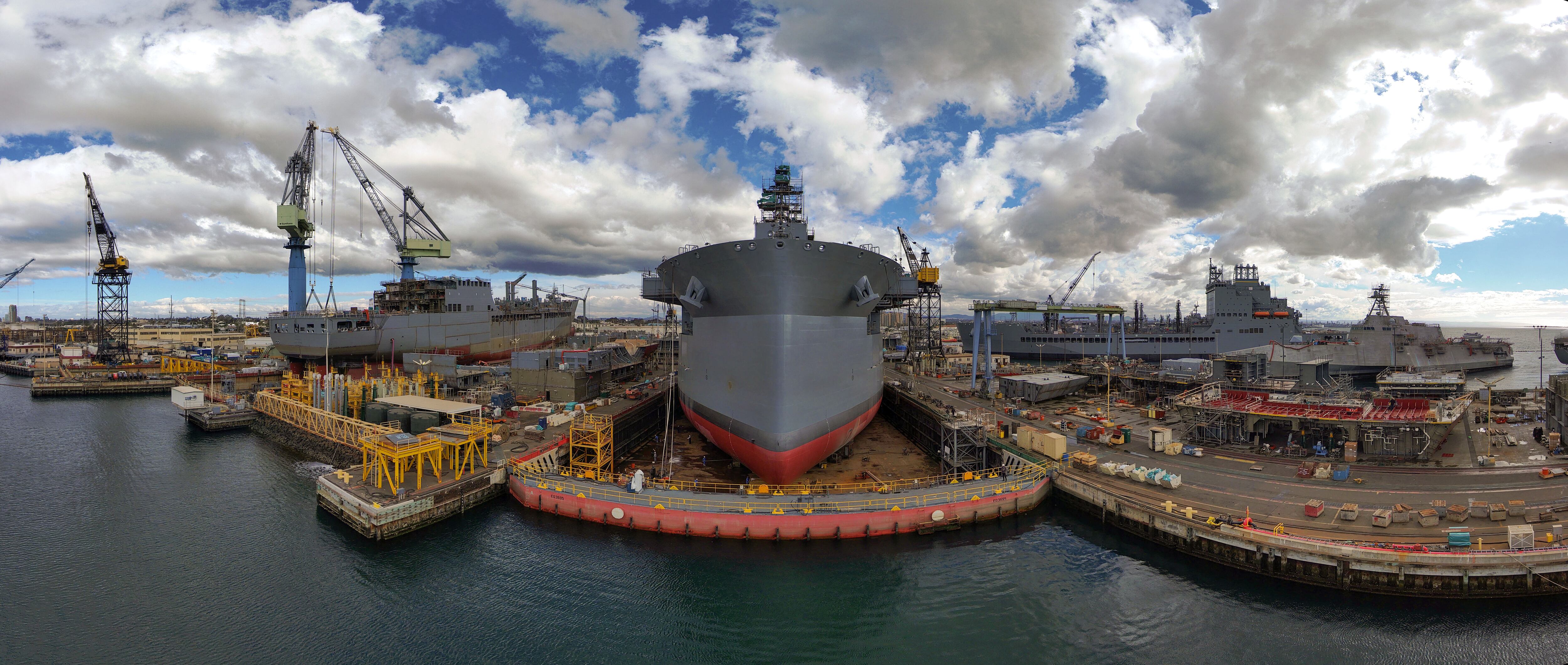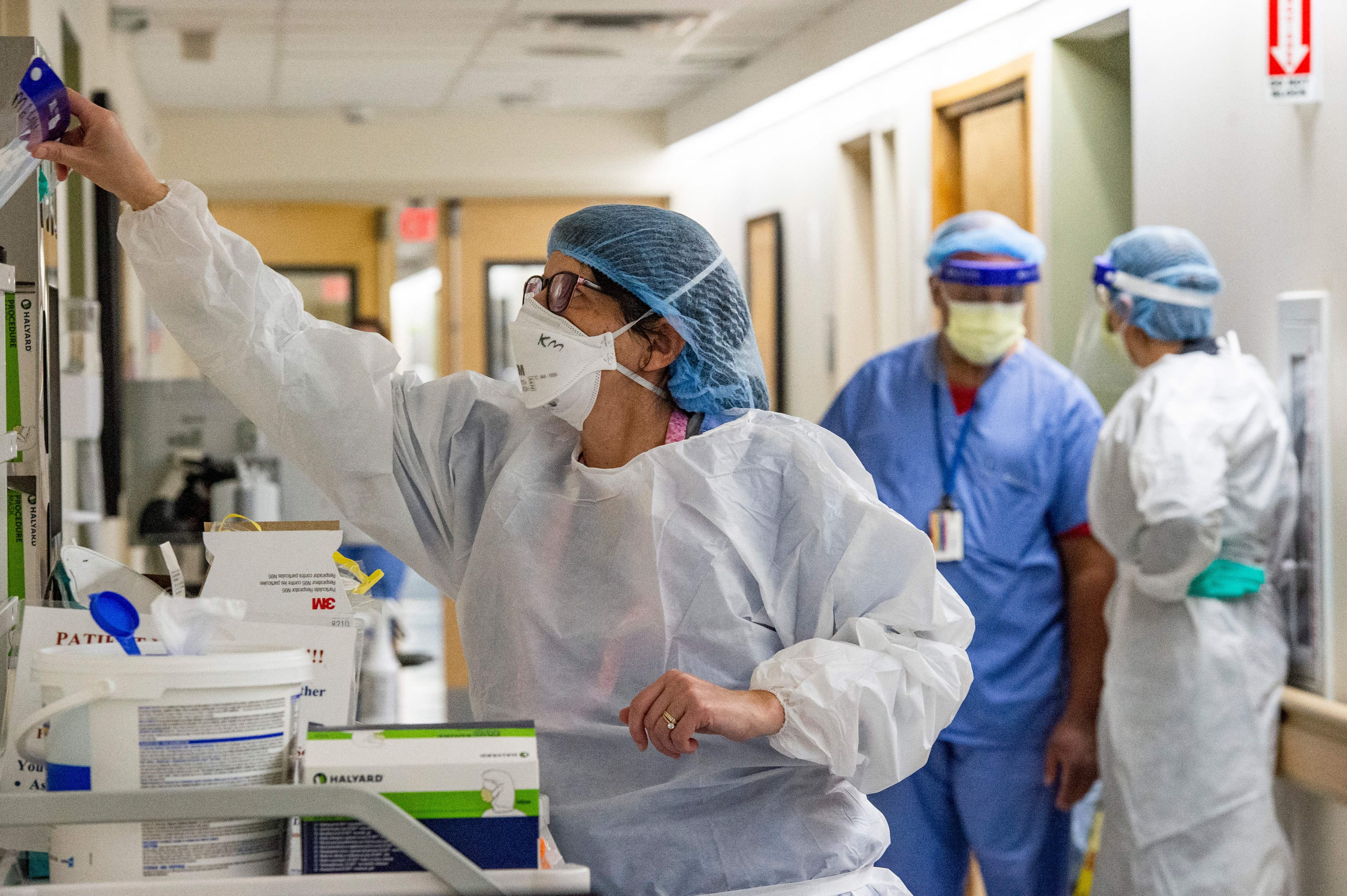SAN DIEGO — General Dynamics’ NASSCO shipyard is nearing the end of its Expeditionary Sea Base shipbuilding program, which has been extended multiple times due to high demand.
It’s also eyeing a potential 2030 timeframe for a push to reinvigorate the sealift fleet.
Now, the California shipyard must determine how to best fill its order books between now and then.
The yard here is unique: it is the only one in the nation that builds new U.S. Navy and commercial ships and conducts repairs on both. This flexibility offers options as it seeks new work, NASSCO President David Carver said in a recent interview.
But after a couple years of turbulent labor and supply chain conditions, the yard is pursuing stability — something it thinks is achievable with a few key programs.
The San Diego shipyard just delivered its fourth Lewis B. Puller-class Expeditionary Sea Base this month and has two more under construction. After that sixth ESB delivers, the yard will need to fill its graving dock with another ship type.
“We’re looking at the [next-generation] sub tender program. We’re looking at commercial possibilities. So we fully intend to fill the graving dock, our build position, with another ship class,” Carver said Feb. 13 from his office overlooking the assembly area.
Or, it could use that space to accelerate the John Lewis-class oiler program.
The first nine oilers are on contract, with two delivered to the Navy and the next four in various phases of construction.
Carver said the program got off to a slow start, was abruptly accelerated in 2018 when a shipyard accident halted the ESB program and forced NASSCO to move those employees to the oiler program to avoid laying them off, and then slowed again when the COVID-19 pandemic hit.
Now, though, the oiler program “is really starting to hit its stride. We are seeing significant ship-over-ship learning, much like we did on our T-AKE program some years back.”
Carver said NASSCO and the Navy have discussed the pace of future oiler construction. He believes building two a year “is probably aggressive” — unless the yard can’t win a contract for the submarine tender or a commercial tanker program to replace the expeditionary sea base program, in which case it could use that graving dock to build more oilers. But, he said, the ideal rate might be alternating between one and two every year in what’s known as a sawtooth profile.
General Dynamics in December finished a capital improvement project to expand the block assembly line. Now, Carver said, production should be able to ramp up such that, by the end of the year, NASSCO is producing one additional block, or segment of a ship hull, each week.
“Seems minor, but one extra block [per week over the course of one year] is a quarter of a T-AO. So we’ll be able to build a quarter of a ship more every year by the end of the year,” he said, noting this would help the yard get to the 1-2-1-2 sawtooth pattern while also being able to pursue the submarine tender or commercial work.

Sealift, sooner or later
Carver is confident there will be a boon in sealift ship spending down the road, perhaps around 2030. A sealift fleet, along with the Air Force’s fleet of cargo aircraft, would carry the ground force and all its supplies to a fight overseas.
“We believe it’s going to happen, it’s just when,” he said. “Our nation’s in trouble in terms of that sealift capability — everyone understands it, but it’s just not a priority to be funded” yet.
Sealift has historically been a challenge because the Navy must buy them, even though the Army would be perhaps the biggest beneficiary of a strong sealift fleet. Because sealift ships don’t fill a Navy operational need, the ships don’t fare well when budgets get tight.
The Navy and the U.S. Maritime Administration have bought used sealift ships in recent years, but the ships have been more expensive than anticipated and required modifications to meet Defense Department sealift requirements.
“It’s a stopgap, but they’re going to have to build new sooner or later,” Carver said, adding that NASSCO has already drafted designs and shared them with the Navy.
The Navy took a stab at a multi-purpose sealift ship called the Common Hull Auxiliary Multi-Mission Platform, or CHAMP, awarding contracts to NASSCO and three other companies in an industry studies phase in 2019. This common hull would have performed five separate missions: sealift, aviation logistics support, hospital, repair tender, and command and control. The cost, though, ballooned to more than $1 billion dollars per ship, leading the Navy to cancel the effort.
Carver said NASSCO’s design costs “a quarter of that price,” and the company continues to make its pitch to the Navy and lawmakers about the need to buy inexpensive sealift ships to reinvigorate the fleet and support the shipbuilding sector.
Repair workload continues to shrink
The shipyard has seen relative stability on the construction side compared to its the ship repair business.
“Ship repair … has dropped for the third year in a row,” with 2024′s workload down one-third compared to three years ago, Carver said.
The Navy has designated some of the work as small business set-asides, leaving companies like NASSCO and its next-door neighbor in San Diego, BAE Systems, ineligible, while other availabilities have been shortened or canceled due to extended deployments or funding shortfalls.
Carver said the ship repair industry overall is in a down cycle and that many other companies have had to lay off employees. NASSCO has avoided this, since it can move employees to the construction side — but Carver said the shipyard has struggled with the growing cost of repair work due to increases in the cost of labor, supplies and overhead related to reforms made after several shipboard fires.
The yard is hopeful the workload will increase beginning in 2025, especially as the Navy moves deeper into its DDG Mod 2.0 effort to upgrade all 25 Flight IIA Arleigh Burke destroyers.
Megan Eckstein is the naval warfare reporter at Defense News. She has covered military news since 2009, with a focus on U.S. Navy and Marine Corps operations, acquisition programs and budgets. She has reported from four geographic fleets and is happiest when she’s filing stories from a ship. Megan is a University of Maryland alumna.




